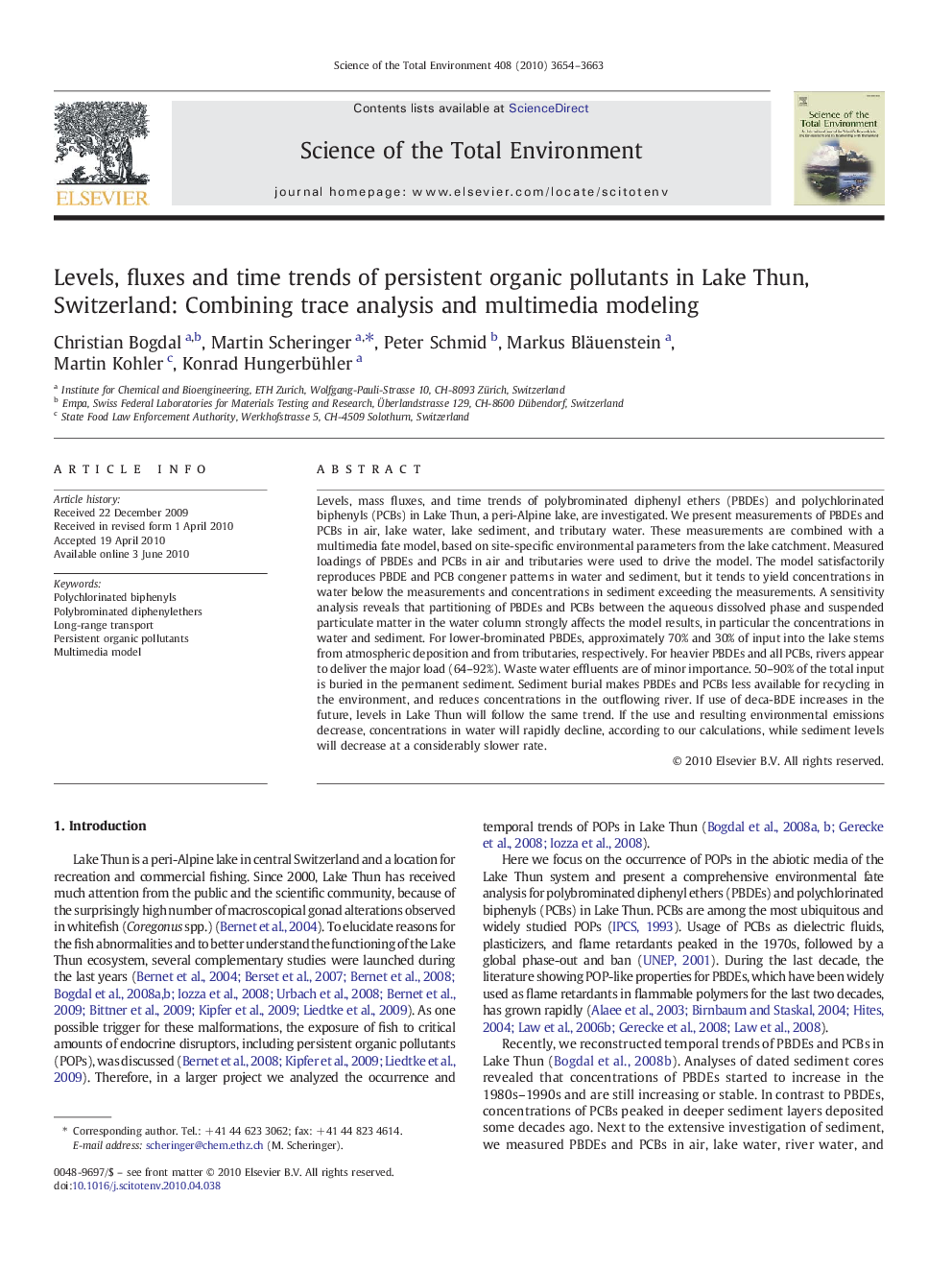| کد مقاله | کد نشریه | سال انتشار | مقاله انگلیسی | نسخه تمام متن |
|---|---|---|---|---|
| 4431231 | 1619869 | 2010 | 10 صفحه PDF | دانلود رایگان |

Levels, mass fluxes, and time trends of polybrominated diphenyl ethers (PBDEs) and polychlorinated biphenyls (PCBs) in Lake Thun, a peri-Alpine lake, are investigated. We present measurements of PBDEs and PCBs in air, lake water, lake sediment, and tributary water. These measurements are combined with a multimedia fate model, based on site-specific environmental parameters from the lake catchment. Measured loadings of PBDEs and PCBs in air and tributaries were used to drive the model. The model satisfactorily reproduces PBDE and PCB congener patterns in water and sediment, but it tends to yield concentrations in water below the measurements and concentrations in sediment exceeding the measurements. A sensitivity analysis reveals that partitioning of PBDEs and PCBs between the aqueous dissolved phase and suspended particulate matter in the water column strongly affects the model results, in particular the concentrations in water and sediment. For lower-brominated PBDEs, approximately 70% and 30% of input into the lake stems from atmospheric deposition and from tributaries, respectively. For heavier PBDEs and all PCBs, rivers appear to deliver the major load (64–92%). Waste water effluents are of minor importance. 50–90% of the total input is buried in the permanent sediment. Sediment burial makes PBDEs and PCBs less available for recycling in the environment, and reduces concentrations in the outflowing river. If use of deca-BDE increases in the future, levels in Lake Thun will follow the same trend. If the use and resulting environmental emissions decrease, concentrations in water will rapidly decline, according to our calculations, while sediment levels will decrease at a considerably slower rate.
Journal: Science of The Total Environment - Volume 408, Issue 17, 1 August 2010, Pages 3654–3663